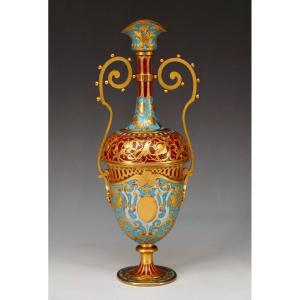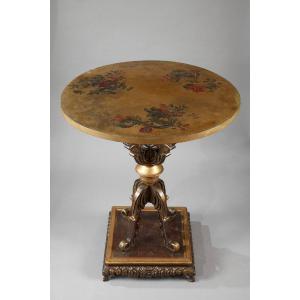Model n° 1567
Biography :
In 1748, François Boch, from the Lorraine village of Audun-le-Tiche, started manufacturing ceramic tableware with his three sons. Luxembourg being one of the Boch’s primary sales markets, François’ son, Pierre-Joseph, requested authorization from the Austrian government to found a factory in the Luxembourg province.
They obtained from Empress Marie-Thérèse in 1767 the privilege of founding a manufacture, authorized to bear the title of “Imperial and Royal Manufacture”.
In 1791, the merchant Nicolas Villeroy acquired a stoneware factory in Vaudrevange, today Wallerfangen, and to modernize his production, experimented with printed decorations with French and English ceramists.
In 1809, Jean-François Boch developed the former Mettlach abbey on the banks of the Saar, with a view to mechanized manufacturing. In 1819 he developed a bright white and extremely resistant earthenware, thus competing with porcelain at lower prices.
It was in 1836, to assert themselves in Europe and particularly in the face of dominant English industry, that the Boch and Villeroy manufactures merged. In 1843, Villeroy and Boch expanded their range and founded the Wadgassen Crystal Factory.
The company participated in the famous Universal Exhibition in London in 1851, Philadelphia in 1876, Paris in 1878 and 1900, Chicago in 1893, Saint Petersburg in 1901 and even in Saint-Louis in 1904.
In 1852, Eugen von Bosch and his technicians developed a process combining extraordinary abrasion resistance and extravagant aesthetics. These tiles, produced in Mettlach, were a worldwide success. The demand was such that in 1866, a factory specializing in the production of tiles was built: the “Mosaikfabrik”. In 1879, Villeroy & Boch took over another factory in Merzig. Both are growing to become the largest wall and floor tile production factories in the world.
Around 1876, the Wallerfangen earthenware factory began manufacturing “piping objects”, the first sanitary ceramics from Villeroy & Boch. The company was already producing toiletries at the end of the 18th century, including many special creations such as those intended for the legendary King Ludwig II of Bavaria. In 1879, Villeroy & Boch began producing artistic terracotta objects. Around 1900, Villeroy & Boch began mass production of bathtubs and toilets. Crossing the ages and continuing its expansion, the company is divided into three departments : Sanitary, Tiles and Tableware/Crystal.








































 Le Magazine de PROANTIC
Le Magazine de PROANTIC TRÉSORS Magazine
TRÉSORS Magazine Rivista Artiquariato
Rivista Artiquariato